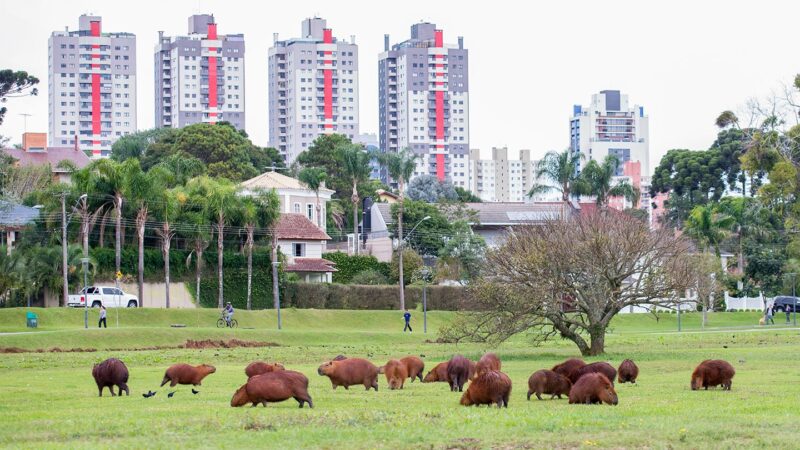Capybaras, the world’s largest rodent, naturally live in vast grasslands, wetlands and rivers throughout South America. Their name literally means grass eater in the Tupi language, which is indigenous to Brazil and other regions in South America.
So scientists who study capybara diets were surprised when they found the animals seemed just as happy munching on leafy forest plants as the wavy grasses they’re used to. The new findings, which appear February 27 in the Journal of Zoology, suggest dietary flexibility has helped capybara populations balloon in cities and survive in farther-flung landscapes fragmented by roads, fields and other human-made changes over the past five decades or so.
“If a species’ diet is pretty specialized, that’s going to constrain their ability to adapt to modified ecosystems,” says Maria Luisa Jorge, an ecologist at Vanderbilt University in Nashville who was not involved in the study. “Capybaras eat a lot of grass — we call them grazers — but they can eat other things.” That has set them up for success, she says.
That success is visible in São Paulo, Brazil’s most densely populated metropolis.
“At the University of São Paulo, you’d see them every day, grazing” on campus, says Marcelo Magioli, an ecologist at Instituto Pró-Carnívoros in Brazil. They also amble along roadways and frequent farm fields, which give them easy access to calorie-rich crops.
Magioli wanted to know what capybaras around Brazil were eating to survive the shifting landscape. So he and his colleagues sampled hair from 210 capybaras in 13 different populations living in natural to heavily modified environments around Brazil. Some animals lived in the bustling metropolis of São Paulo; others lived near agricultural fields.
The team also sampled two populations in the Pantanal — South America’s massive, flooded grassland. The researchers analyzed carbon isotopes, different forms of carbon that can act as chemical fingerprints, in capybara hairs. The carbon isotopes told the scientists how much grass versus forest plants the animals ate.
As expected, capybaras with access to crops were eating them up; corn and sugarcane are grasses, familiar foods for the rodents. But capybaras in more fragmented, urban areas and in the Pantanal, where forests are encroaching into grasslands, munched on trees, vines and even cacti that were available to them, rather than selectively searching out grasses, the team found. Some capybaras ate both.
“I think the most impressive feeding behavior of this species is that they can transition between preferred and nonpreferred foods so they can survive in practically any habitat,” Magioli says.
Subscribe to Science News
Get great science journalism, from the most trusted source, delivered to your doorstep.
While the flexible diet might mean capybaras have survived some big ecosystem changes, it’s not all good news. Crop-eating capybaras can get too chunky and suffer poor health, as well as be viewed as pests by farmers for eating or damaging crops. Comfort around infrastructure means more get hit by cars, and ticks the rodents carry can transmit deadly Brazilian spotted fever to humans.
Reconnecting fragmented landscapes could let natural predators control capybara populations, decrease contact with humans and restore an ecological balance, Magioli says.


